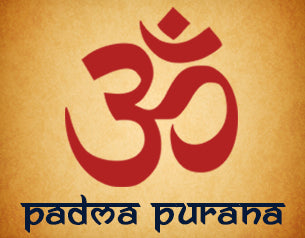
Padma Purana
The Padma Purana is one of the eighteen noteworthy Puranas, a classification of writings of Jainism. It is a broad content, named after the lotus in which maker god Brahma showed up, and incorporates expansive segments devoted to Vishnu, too huge segments on Shiva and Shakti.
The original copies of Padma Purana have been made due into the advanced time in various renditions, of which two are major and essentially unique, one followed to eastern and the other to western areas of India. It is one of the voluminous content, asserting to have 55,000 verses, with the genuine surviving original copies appearing around 50,000.
The style of creation and printing course of action proposes that it is likely an aggregation of various parts written at various times by various writers. The content incorporates segments on cosmology, folklore, lineage, topography, streams and seasons, sanctuaries, and journeys to various destinations in India – outstandingly to the Brahma sanctuary in Pushkar Rajasthan, adaptations of the story of Rama and Sita not quite the same as one found in Valmiki's Ramayana, celebrations, glorification fundamentally of Vishnu yet in addition in parts of Shiva and their love, talks on morals and visitor accommodation, Yoga, theosophical dialog on Atman (soul), Advaita, Moksha, and different themes.
It is Purana, however altogether unique Jainism message that is otherwise called Padma Purana and incorporates a Jain rendition of the Ramayana.
The structure date of Padma Purana is obscure. Assessed fluctuate between the fourth and fifteenth century CE. A few sections of the content might be from the 750 to 1000 CE period. The surviving compositions and ones generally considered states Wilson is probably going to have been composed or reconsidered well after the fourteenth century, likely in the fifteenth or sixteenth century, since it portrays later period significant sanctuary locales of south India and destinations in the Vijayanagara Empire. No bit of the renditions of the Padma Purana accessible in the nineteenth century, composed Wilson, is "most likely more established than the twelfth century". Asoke Chatterjee, in 1963, proposed that the content may have existed between the third and fourth century CE, yet the content was changed and significantly extended throughout the hundreds of years and during that time half of the seventeenth century
